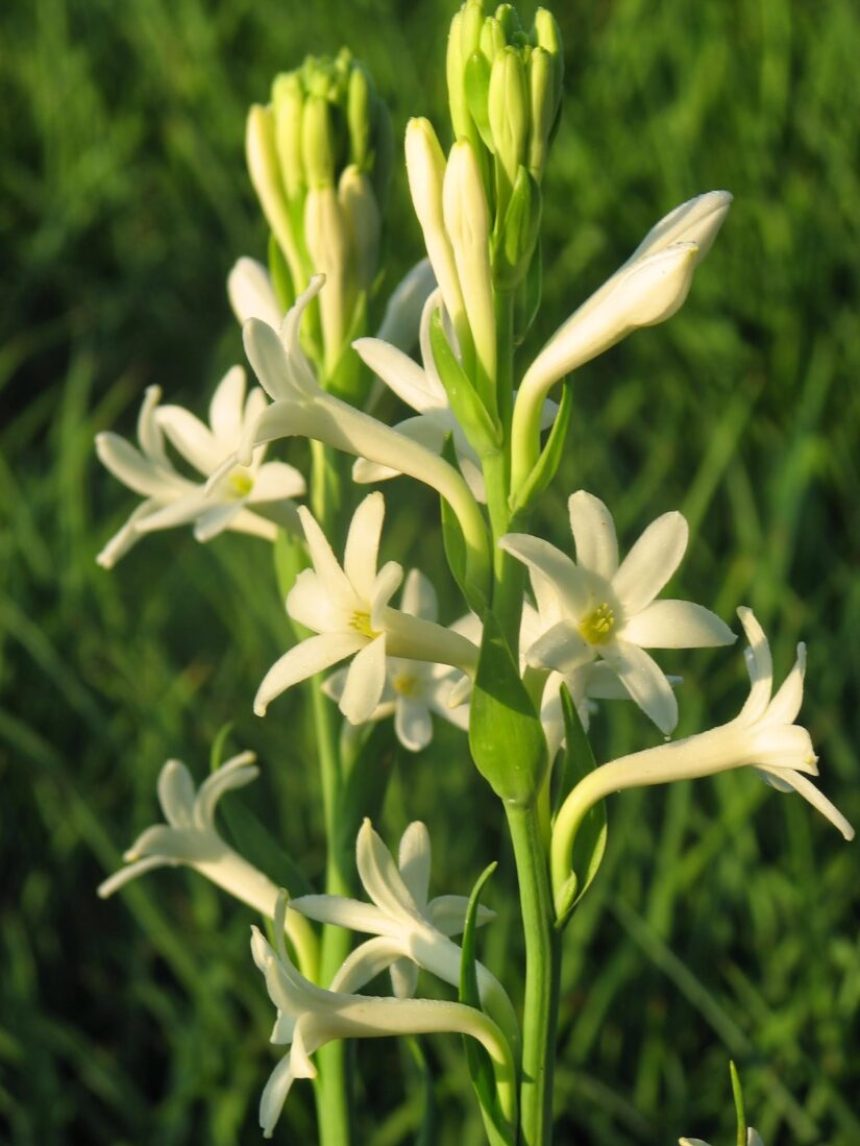The humble dill plant was my garden workhorse last summer—it’s just about the easiest plant to grow, the bees and butterflies love the stuff, and I chopped the frilly fronds and scattered them over salads, breakfast eggs, and tomato sandwiches. The beautiful flower heads, which look like a yellow Queen Anne’s lace, make fragrant and surprising additions to floral arrangements.
I saved my seeds from last year, but I love that Ujamaa Seeds offers them, too—the entire site is worth poking around for seeds with backstories. For many plant people, paging through seed catalogues is a winter highlight while we wait for the soil to warm up. These Southern chefs and gardeners share the seeds and plants they’re eager to get in the ground—for early spring blooms, summer harvests, and beyond.
Green Zebra Tomatoes
William Dissen, North Carolina chef and restaurateur at the Market Place, Billy D’s Fried Chicken, and Little Gem
“I love these heirloom tomatoes and plant them every year in my home garden. They have a beautiful chartreuse color with deep lime-green stripes. They have a deep tomato flavor, with a nice sweetness and the perfect acidity. One of my favorites for a summer BLT!”
Find them here.
Truhart Sweet Pepper
Kevin Mitchell, South Carolina Chef Ambassador
“As I think back to writing the book Taste the State Georgia, I think back to our entry on pimento cheese. I am looking forward to seeing the Truhart Sweet Peeper at Southern tables. This disease-resistant pepper is similar in configuration to the Perfection pepper used to make pimento cheese. To some, the Truhart is a replacement for the Perfection.”
Lenten Rose
Gret Mackintosh, artist and landscape architect
“In our South Carolina backyard, there is so much shade under the oaks, it’s been a challenge to add interest to the landscape with shades of green and textures. With the minimal sunlight, there aren’t many options for color, but I have one spot where I’d like to break up the green ferns and add some Lenten rose this year. My mom, in North Carolina, has the most gorgeous swath of Lenten rose on either side of the path leading up to her back door that is a showstopper every spring and just keeps getting fuller. That’s my inspiration. I absolutely love the muted color palette of Helleborus, and the evergreen foliage through the winter is a bonus.”
Available as plants at many garden shops; find them as seeds here.
Mustard Greens
David Shields, Southern food historian
“In the trio of classic pot greens—collards, turnips, and mustard—mustards have too long stood in third place. Some people find too much pepper or too much bitter in the greens. Part of the problem is they aren’t looking for the best-tasting varieties of mustard. My advice: Seek out the Feaster family mustard, with its sprightly, not harsh, flavor and signature broad stalks. Southern Exposure Seed Exchange, Sow True Seed, and Working Food in Florida all supply seed. While you are at the Southern Exposure Seed Exchange site, pick up the Carolina broadleaf mustard, too.”
Erysimum ‘Bowles’s Mauve,’ a.k.a. Wallflower
Chip Callaway, Southern garden designer
“This ‘wallflower’ needs a better name. Nothing shy and retiring about it. Mine typically bloom in February and continue to dazzle through the season. No pampering needed. In fact, they thrive in challenging soils. Deer don’t seem to like them, but I surely do.”
Find it here.
Alabama Blue Collards
Steven Satterfield, chef and co-owner of Miller Union and Madeira Park in Atlanta
“They are gorgeous in the garden, and they are kind of like a hybrid of a tender young collard green and a sturdy kale leaf. I made a big batch for New Year’s Day, but because I was going to be traveling with friends in Palm Springs, I cooked them after Christmas and vac-sealed them for the flight in a checked cooler with my hoppin’ John, chowchow, and cornbread. But these are great for any occasion and don’t have to be relegated to just one day. They have a delicious, sweet flavor after a frost, and Lord knows we’ve had plenty of cold weather lately in the South. This seed company stocks them, and our friends at Love is Love Farm grow them during the cooler season.”
(Editor’s note: Southerners often plant collards in the late summer or early fall, but a late-winter or early-spring planting could yield a crop before the heat of summer arrives.)
Tuberoses
Jenks Farmer, Southern author and plantsman
Blooming tuberoses.
“Used to be there was just one or two famous old tuberoses. They were famous from the Aztecs right down to curious Southern gardeners. This year, there are a dozen or so with different colors and flowers. They do make handsome little plants, but the tuberose is all about the ambrosia fragrance that fills the night air. There is one secret to growing them: In gardener jargon, they must be grown hard. That means, dense, tight clay like soils with little organic matter, no summer irrigation, and little fertilizer. If you have rich garden soil, better put them in a pot. I’m planting lots for a summer wedding and getting mine and most of my bulbs from Terra Ceia Farms, a specialty bulb nursery run by three generations of North Carolinians.”
Puerto Rico Everblush Okra
Chris Smith, founder of the Utopian Seed Project in North Carolina
“I fell in love with this okra in 2018 and have been growing it every year since. It has beautiful rounded green pods with a red blush. They stay tender at length, have a soft velvet sheen, and are absolutely delicious. I look forward to snapping them from the plants and eating my first fresh okra pod of the year. My daughters enjoy okra raw as well, and actually prefer it over me cooking it, so these tasty, crunchy snacks are the perfect pod.”
Find it here.







